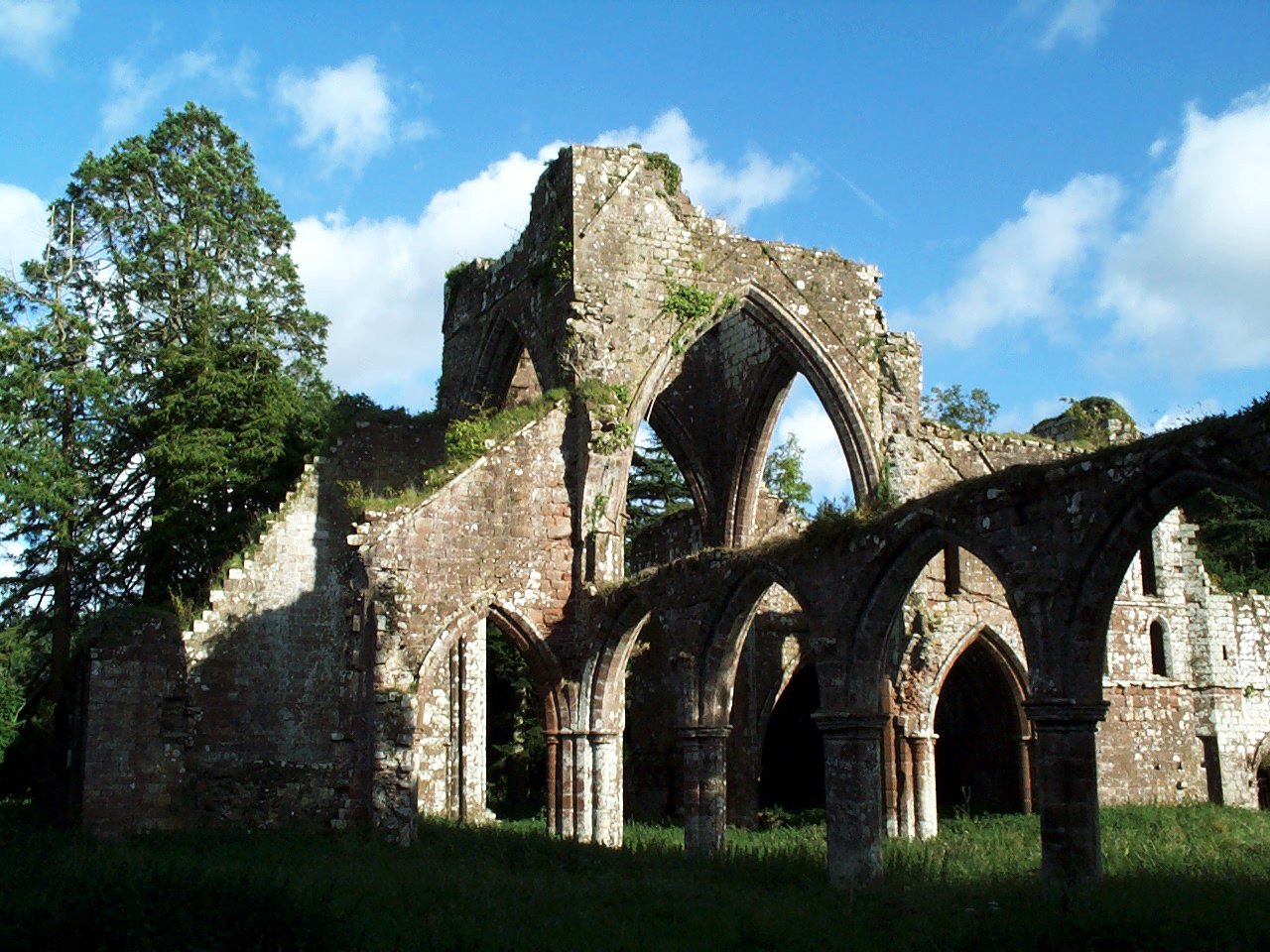Calder Abbey
It would seem that after the death of the lord of Egremont,
William le Meschin (d.1130/34), his lands were briefly inherited by his
son, Ralph le Meschin (d.bef.1138). It was this Ralph who founded
the first Calder abbey as a house of Savigny at Kaldra on 10 January 1134. Some time soon afterwards he added Bemertone and Holegate,
a burgage in Egremont was well as 2 saltpans at Whitehaven, fisheries
in the rivers Derwent and Egre as well as pastures in his forest and
the materials to build the abbey. Twelve, mostly local monks set
up the new community and remained there until 1138, living a life of
great hardship under the supervision of the monks of Furness, another
Savigniac house. In that year politics caught up with them.
King David of Scotland (d.1153) crossed the River Tweed and besieged Wark castle
on 10 January 1138. Leaving a besieging force at the castle the
king detached his nephew, William Fitz Duncan (d.1152/54), to move
towards Hexham, where he was joined by his king by 25 January. In
February King Stephen (d.1154) relieved Wark
and invaded Scotland chasing David and William back across the
border. When Stephen withdrew in April David returned and again
besieged Wark together with Norham castle.
Meanwhile William Fitz Duncan was sent to annex the districts of
Copeland and Allerdale which he claimed in right of his second wife,
Alice Romilly (d.1187). William swept through the district laying
waste Calder abbey and possibly the castles of Cockermouth and Egremont too. On 10 June he had reached as far south as Clitheroe
where he routed a force of English knights and enforced his
overlordship over the lands he claimed. This decision was not
even reversed by King David's defeat at the battle of the Standard 2 months later.
Abbot Philip of Byland (1196-99) recorded the 1138 attack on Calder abbey.
As a result the monks fled to Furness, where they were refused
admission due to Abbot Gerold of Calder refusing to resign his office
and the abbot of Furness being unwilling to have monks from another
abbey owing loyalty to an abbot other than himself in his own
house. The attack on Copeland by William Fitz Duncan may have
been responsible for the death of the young Ralph le Meschin as he is
not heard of again. The removal of its lord could well mean that
all the castles of the district came under William Fitz Duncan's
control at this time, although King David only restored Skipton to him in 1151.
The Calder monks, with their remaining possessions, a cart drawn by a
team of 8 oxen carrying all their books and household utensils,
eventually ending up at Byland, where in 1142 the Order of Savigny
revoked the new house's allegiance to Furness abbey. Consequently
in 1143, the abbot of Furness sent out another party of monks to
reoccupy and refound Calder abbey. The new abbey subsequently had
its possessions increased by the bounty of William Fitz Duncan, the man
who had destroyed the first foundation. Later, William's
daughter, Cecily (d.1188+), as countess of Aumale and lady of Copeland,
confirmed the monks in their lands for the souls of her parents.
Copyright©2021 Paul Martin Remfry
